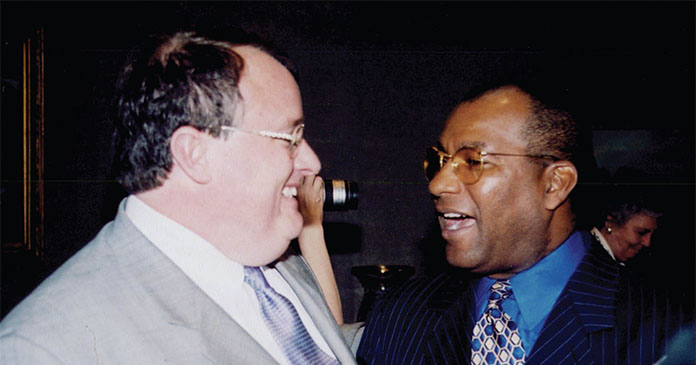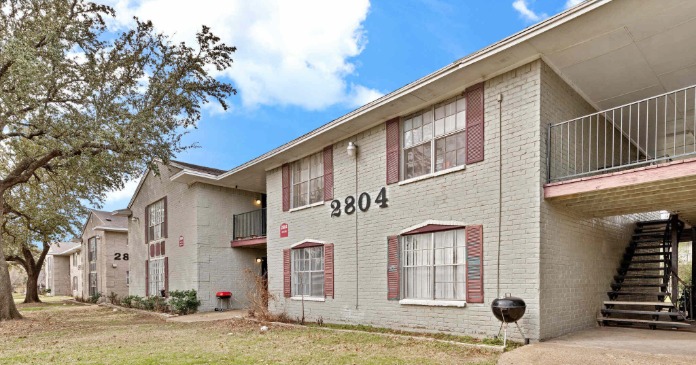
“It’s true. In the ghetto, only the strong survive—and I don’t mean just physical strength,” West said. “I mean strength found in family, religion, friendship, quick wit, love and hard work.”
Founded in 1866, the Fifth Ward became one of six political-geographic areas that make up the city of Houston. By the mid-1880s, it was virtually all African-American, home to a working class who made their living in Houston’s East side ship channel, industrial areas, or as domestics.
Just east of downtown, today the community encompasses seven hundred blocks and is home to 40,000-plus residents. In hand with its continually-changing demographics, it is noted as the second-most-diverse community in the country; Los Angeles is first.
Over the years it has remained home to the city’s minority and immigrant population, and although it is mostly Black, Latinos, Filipino Americans, Pakistani Americans, and Italian Catholics also make up its residents.
Lending to its once sobering reputation as the “Bloody Fifth,” is its hard-to-shake notoriety for crime and gangs. Crime Rankings 2010-2011, published by CQ Press, ranked the city of Houston’s crime as ninthhighest for big cities nationwide, placing it on a list with the likes of Detroit, Mich. and Columbus, Ohio., although the city has less than half the crimes per capita of those atop the rankings.
In reality, violent crime in Houston fell 8 percent during the first half of 2010, and was on a pace to reach the lowest level since 2000.
One Fifth Ward resident, Stephan Fairfield, began his confluence with this unlikely neighborhood as he occupied one of his own, newly-constructed developments in 1993 at the tender age of 30.
In the late 1980s Fairfield was a founding member of the Fifth Ward’s non-profit housing organization, Habitat for Humanity. He solicited the assistance of other developers for street and utility improvements, while becoming a household name for his overarching work.
The basic underpinnings of Fairfield-the man, are three-fold: Faith, charity, and business. And yes, in that order.
“Texas is steeped in Southern culture and charitable tradition, with Houston particularly strong in such Deep South conscious. Yet, the Southern manner of conduct is frequently constricted by the Western ethos of pulling yourself up by the bootstraps,” said Fairfield. “Bring these two philosophies into the same room, and it suddenly it’s difficult to support the destitute.”
Fairfield, a Presbyterian by faith, believes it a mandate to infuse faith into all facets of life, albeit business or personal.
“My highest importance is to affirm the dignity of people,” said Fairfield. “I do this by providing them with choice.”
His reference to choice is not just about housing, but with regard to non-profits spanning the Houston Foreclosure Prevention Task Force, Bank on Houston, a lowincome family banking service, and Covenant Community Capital Corp.
The second-generation real estate developer’s early volunteering led him to a position as a Houston City Planner in 1988. He subsequently returned to the private sector to become the executive director of the Fifth Ward Community Redevelopment Corp. (CRC). This charitable organization had been founded by the retired Rev. Harvey Clemons, Jr. of Pleasant Hill Baptist Church. It’s mission: to improve the quality of life for its residents via housing development and rehabilitation, as well as socioeconomic revitalization.
“Affordable housing is not just building homes. It’s community development,” said Fairfield. “In the early, banks could not conceive this notion, and were unable to address the full extent of the need.”
Modeled after Community Development Corp. in New York, the Fifth Ward CRC was founded in 1981 with funding from the Ford Foundation, and private financing. Fairfield conducted architectural reviews at the local church, along with resident participation which naturally encouraged both adoption and consumer preference; residents would eagerly champion improved architectural standards
In Phase 1, 200 new homes were added to the community, one per block. Each community stakeholder encouraged four subsequent home improvements the following year. The organization went on to receive city funding to rebuild local parks under the new Parks-to-Standards program, and repave streets.
The Fifth Ward has an overall sense of history and “small-scale, deep-rooted personal history. In the middle of the city, lives are intertwined in a small-town way,” stated Lisa Gray, Houston Press in 2000.
Indeed, many families had lived in the area for generations including Kathy Flanagan-Payton, current CEO of the Fifth Ward CRC, and granddaughter of a 103-year old life-long resident, who just recently passed away.
“The Fifth Ward is holy ground,” says Clemons, “we have struggled in segregation, blight and its children have come out of the struggles of generations.”
Fairfield elaborates, “We incorporate their needs into our designs. Residents need their families to economically improve their lifestyle. Our goal is to maximize their financial potential.”
Under Fairfield’s direction, funding was supported by Bank United beginning with an initial $1 million.
“His vision for comprehensive neighborhood revitalization takes the theoretical into the experiential,” said Clemons. “Stephan acts upon his own behest, devoting his family to the community.”
“New homes were developed under staged construction because activity supports change, and change elevates vision. Neighborhoods decay over decades, and it takes the same amount of time to rebuild their hope in the community. The residents internalize this in their own lives, with each dilapidated building, as change occurs, their prospects improve in kind,”says Clemons.
He went on to explain that optimized gentrification developments include a 50-50 blend of families of lower and middle income demographics. When referencing his past efforts at the CRC, he states “It’s not us; it’s in the heart of the residents of the Fifth Ward.”
Simultaneously to his management of the CRC, Fairfield founded in 1998 the Covenant Community Capital Corp. It is modeled after the IDA, (Individual Development and Asset Accounts) a national program supported by the Washington Investment Group in St. Louis. This nonprofit is designed to support residents in their efforts to purchase an affordable home, grow a small business or finance their education within the Ward.
Today, as CEO, he cites existing community need, “It takes the private sector, because neighborhood groups don’t have the staff, time and talent to engage residents. Our goal is not to replicate, it’s to tackle those elements that are not being addressed such as control, security of tenure, equity,” said Fairfield. “Then the program facilitates wealth which can be passed to the next generation.”
The organization’s funding comes from the United Way, and the private sector including Wells Fargo, Chase and Bank of America. Only low income housing residents qualify. To remain in the program they must save a minimum of $35 a month. The average participant takes 2-3 years to complete the program with an average income of $19,500.
Each prospective resident is also required to participate in a credit training program that teaches individuals to properly manage his/her money. Each prospect’s savings is matched 2:1.
To date the program boasts 400 graduates, and 600 enrollees.
Fairfield incorporated Orchard Communities, Inc. in 2002 as an affordable, senior housing provider. Key financing came in 2005 through the Fannie Mae Foundation, and Orchard Communities now has just under 500 single-family units, both active and under construction.
Fairfield is constantly seeking others to join his quest. “There are a lot of folks looking to be more helpful, and we would like to be a vehicle for engagement,” he says. “Something as simple as having a Wii onsite for virtual bowling, physical exercise and social fulfillment is significant to our residents.”
Kelly Schoon, asset manager for Orchard, adds, “Senior properties provide a huge return. We facilitate the revival of the spirit and life’s engagement.”
Adds Dr. Brian Fikkert of Covenant Community Capital, “Poverty perpetuates an environment of inequality in the minds of the community and its members, which subsequently creates an inability to improve their capacity to elevate themselves. We teach our students there is something inherently good available for all people, and hope for all communities.”
Clements adds, “We hold a futuristic look with gentrifying the community, while not displacing its culture. It’s a balancing act.”
“Our community is beginning to grow and flourish, defined under culturally, socially and economically based programs. Simultaneously, we recognize the need to protect low-income families, not allowing them to be forced from their homes, concludes Payton adds.
Author Lisa Benson















